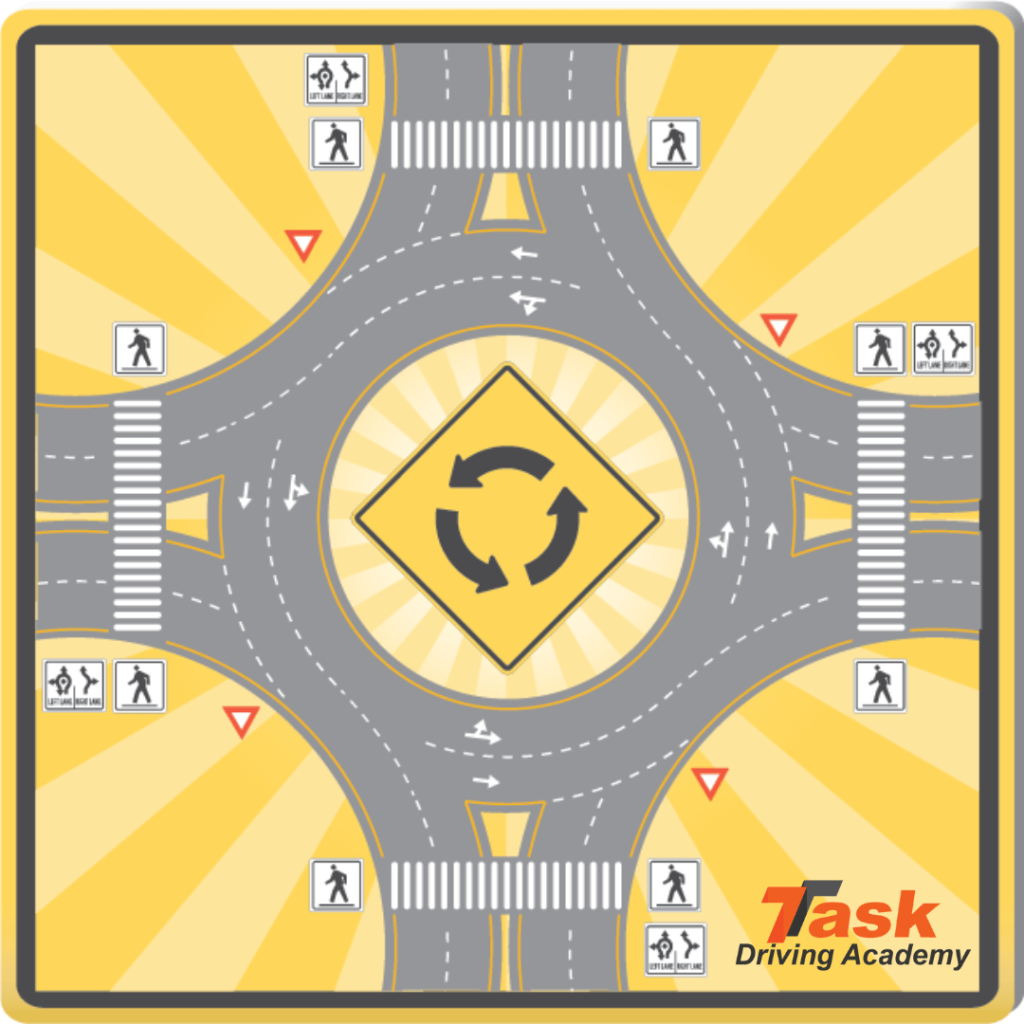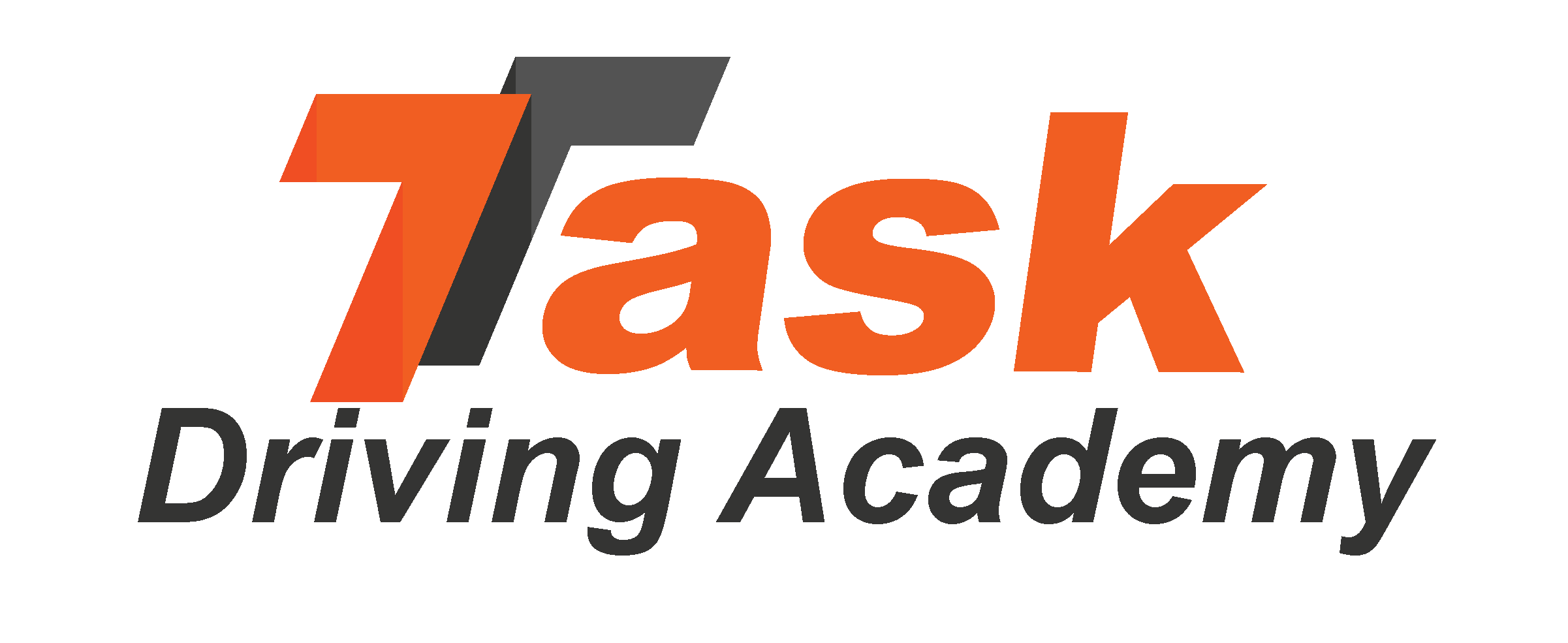How to use a roundabout is a crucial skill for any driver, especially with the increasing number of roundabouts being implemented to improve traffic flow and safety. Navigating these traffic circles can be challenging for new drivers or those unfamiliar with the rules in Vancouver. This comprehensive guide, with insights from Task Driving Academy, will help you master the art of using roundabouts safely and efficiently.
Table of Contents
1. Understand the Purpose of Roundabouts
Roundabouts, also known as traffic circles, are designed to improve traffic flow and reduce the likelihood of accidents at intersections. By keeping traffic moving in a circular pattern, they eliminate the need for traffic signals and reduce the points of conflict between vehicles. Knowing the purpose of roundabouts can help you appreciate their importance and approach them with confidence.
2. Slow Down and Yield
One of the fundamental rules of how to use a roundabout is to slow down as you approach. Unlike traditional intersections, roundabouts require you to yield to traffic already circulating within the circle. Look to your left and wait for a safe gap before entering. Patience is key to ensuring everyone’s safety.
3. Choose the Correct Lane
Lane selection is critical when using a roundabout. Before you enter, make sure you’re in the appropriate lane for your intended exit. Generally, if you’re taking the first exit (typically a right turn), stay in the right lane. For exits straight ahead or to the left, use the left lane. Task Driving Academy emphasizes the importance of understanding lane usage to prevent confusion and accidents within roundabouts.
4. Signal Your Intentions
Signaling your intentions is essential for clear communication with other drivers. When approaching your exit within the roundabout, use your right turn signal to indicate your intention to leave the circle. This practice helps prevent misunderstandings and ensures a smoother flow of traffic.
5. Maintain a Steady Speed
Once inside the roundabout, maintain a steady speed without stopping or accelerating abruptly. The circular design of roundabouts facilitates a continuous flow of traffic, and stopping suddenly can disrupt this flow and cause rear-end collisions. Keep a consistent speed to navigate the roundabout smoothly.

6. Be Aware of Pedestrians and Cyclists
Roundabouts are not only for vehicles; pedestrians and cyclists also use them. Be vigilant and yield to pedestrians at crosswalks and watch for cyclists sharing the road. Task Driving Academy teaches drivers to be mindful of all road users, ensuring everyone can navigate roundabouts safely.
7. Practice Makes Perfect
The best way to become proficient at using roundabouts is through practice. Consider enrolling in driving lessons at Task Driving Academy, where experienced instructors can provide hands-on training and practical tips. Practicing in a controlled environment can boost your confidence and prepare you for real-world scenarios.
Common Mistakes to Avoid
Understanding how to use a roundabout also involves knowing what not to do. Here are some common mistakes to avoid:
- Entering Too Quickly: Speeding into a roundabout can lead to collisions. Always approach with caution and yield to traffic.
- Incorrect Lane Usage: Entering the wrong lane can cause confusion and accidents. Know your exit and choose the correct lane accordingly.
- Failure to Signal: Not signaling your intentions can confuse other drivers. Always use your turn signal when exiting.
- Stopping Inside the Roundabout: Stopping abruptly can disrupt traffic flow. Maintain a steady speed and only stop if necessary to avoid an accident.
The Role of Task Driving Academy
Task Driving Academy plays a crucial role in helping new and experienced drivers alike master the skill of using roundabouts. With a focus on practical training and real-world scenarios, Task Driving Academy provides the tools and knowledge needed to navigate traffic circles with confidence.
- Customized Lessons: Task Driving Academy offers tailored lessons that address specific areas of need, including roundabout navigation.
- Experienced Instructors: Learn from experienced instructors who provide personalized feedback and guidance.
- Hands-On Practice: Gain real-world experience in a controlled environment, building your confidence and skills.
Conclusion
Knowing how to use a roundabout is essential for safe and efficient driving. By understanding the purpose of roundabouts, choosing the correct lane, signaling your intentions, and maintaining a steady speed, you can navigate these traffic circles with ease. Avoid common mistakes and consider enrolling in driving lessons at Task Driving Academy for hands-on practice and expert guidance.
Roundabouts are designed to improve traffic flow and safety, but they require a certain level of skill and understanding. With the right knowledge and practice, you can master the art of using roundabouts, ensuring a smoother and safer driving experience for everyone on the road.
